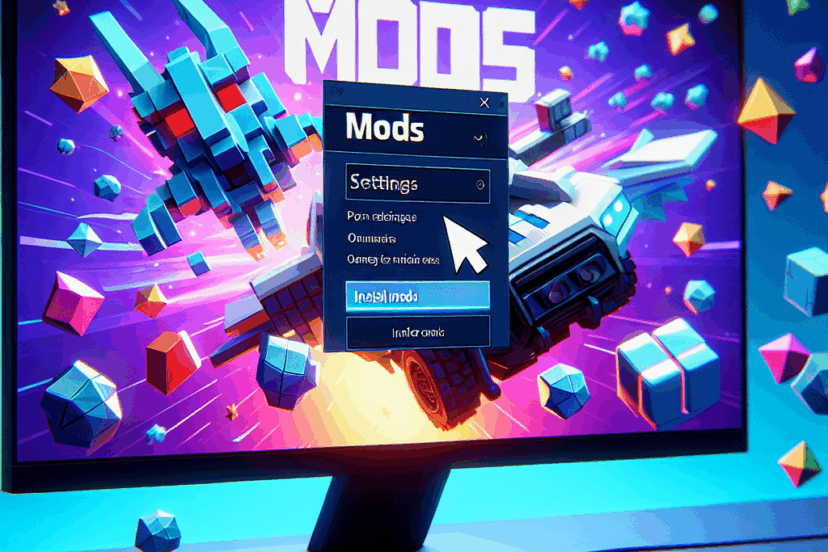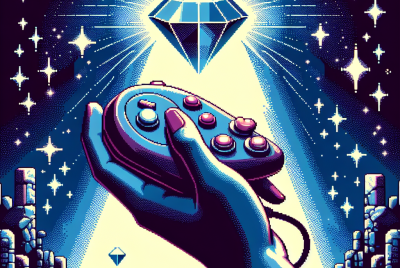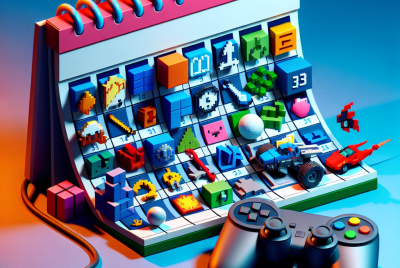How VR Technology is Revolutionizing the Gaming Industry
The Rise of Virtual Reality in Gaming
The gaming industry has always been at the forefront of adopting new technologies. From 8-bit graphics to realistic 3D worlds, each leap has transformed how players interact with their favorite games. Now, virtual reality (VR) is emerging as the next big thing, promising an immersive experience that traditional gaming cannot match.
Understanding Virtual Reality
At its core, virtual reality is a technology that simulates a user's physical presence in a digital environment. This is achieved through the use of VR headsets, which create a 3D visual experience and sometimes include auditory feedback as well. Some advanced systems even incorporate haptic feedback, engaging the sense of touch and allowing players to interact with the virtual world in a more tangible way.
The Components of VR Gaming
To fully appreciate how VR is revolutionizing gaming, it’s essential to understand its key components:
VR Headsets
These are the most visible part of the VR experience. Popular headsets such as the Oculus Quest, HTC Vive, and PlayStation VR have become household names. They come equipped with advanced displays that offer a wider field of view and enhanced resolution, allowing players to feel as though they are truly inside the game.
Tracking Systems
Tracking is crucial in VR. It ensures that the movements of the player are mirrored accurately in the virtual world. Many modern systems use a combination of external sensors and inside-out tracking technology to achieve this, providing smooth gameplay without the frustration of lag.
Controllers and Input Devices
Most VR systems come with specialized controllers that allow players to interact with the virtual world. These controllers often feature motion tracking and haptic feedback, enabling users to perform actions like swinging a sword or shooting a bow with a sense of realism.
The Immersive Experience
One of the most significant advantages of VR in gaming is the immersive experience it provides. Traditional gaming often separates the player from the game world, but VR bridges that gap.
Enhancing Player Engagement
Players wearing VR headsets can turn their heads and look around the virtual environment as if they were actually there. This level of engagement encourages players to spend more time in the game. Developers are capitalizing on this by creating expansive worlds that players can explore, filled with intricate details that make the experience all the more captivating.
Creating Emotional Connections
Another aspect where VR excels is in evoking emotions. The sense of presence in a virtual world can lead to genuine emotional experiences, whether it’s the thrill of a rollercoaster in a theme park simulation or the tension of a horror game. Players find themselves more invested in the story and characters when they can interact with them on a personal level.
Innovative Game Design
VR doesn't just enhance existing gaming formats; it also paves the way for new game design paradigms.
Nonlinear Gameplay
With VR, game designers have the freedom to create nonlinear experiences where players can dictate the pace and flow of their journey. This allows for a level of exploration and decision-making that traditional games often constrain with linear storylines.
Physical Interaction
VR encourages physical movement, which can lead to a healthier gaming experience. Many VR games require players to stand, walk, or even run, giving a workout element that most sedentary gaming does not offer. This incorporation of physical activity expands the demographic of gamers to those who may not be inclined to sit for hours.
The Social Aspect of VR Gaming
One of the most exciting developments in VR is its potential for social interaction.
Multiplayer Experiences
Games like VRChat and Rec Room have transformed how people connect in gaming environments. Players can socialize with friends or meet new people in virtual spaces, creating a sense of community that transcends geographical boundaries. These multiplayer experiences can blend gaming and socializing into one cohesive activity.
Shared Experiences
Imagine being in the same virtual room with friends or family, even if they're miles away. VR allows for shared experiences that feel personal and engaging. Players can collaborate on challenges, enjoy virtual events, or even attend concerts together, creating memories that go beyond the traditional gameplay.
The Challenges of VR in Gaming
While VR technology is making waves in the gaming industry, it also faces several challenges that must be addressed for widespread adoption.
Cost and Accessibility
One of the biggest hurdles is affordability. High-end VR systems can be expensive, and the additional costs for gaming PCs and accessories can deter potential users. However, price points are beginning to lower with new advancements, making it more approachable for the average gamer.
Health Concerns
There are also health concerns associated with VR. Prolonged use can lead to discomfort, nausea, or even motion sickness for some individuals. Developers are exploring ways to minimize these issues through better design and user feedback, but it remains a critical factor in the growth and acceptance of VR.
The Future of VR Gaming
As VR technology continues to evolve, the future looks bright for immersive gaming experiences.
Improved Technology
Technological advancements in graphics, processing power, and tracking will lead to even more realistic environments. We can expect VR experiences to evolve further with enhanced graphics, lifelike character interactions, and fluid gameplay mechanics. As hardware improves, we may see even more breathtaking virtual worlds that feel indistinguishable from reality.
Integration with Other Technologies
The integration of augmented reality (AR) and mixed reality (MR) with VR is another trend to watch. Games that blend real-world elements with virtual experiences can lead to innovative gameplay mechanics and storytelling opportunities. Imagine playing a game where your real-world surroundings become part of the virtual landscape—this fusion of technologies could redefine gaming.
Case Studies of Successful VR Titles
Several VR games have already made a significant impact on the market, showcasing what's possible within this medium.
Beat Saber
Beat Saber is a rhythm game that has captivated players by turning music into an immersive experience. Players slice through blocks to the beat of their favorite songs, combining physical movement with rhythm-based gameplay. Its success highlights how VR can breathe new life into well-established genres.
Half-Life: Alyx
As a flagship title for VR, Half-Life: Alyx has received critical acclaim for its storytelling and gameplay mechanics. It highlights the potential of VR to offer gripping narratives in a fully realized 3D environment, setting a benchmark for future games.
Boneworks
Boneworks is a prime example of physics-driven gameplay in VR. The game emphasizes user interaction in a sandbox environment, allowing players to experiment with physics-based puzzles and combat. Its success showcases the potential for creativity within virtual environments.
Developing a VR Game
Creating a VR game involves unique challenges compared to traditional game development. Let’s break this down further.
Design Considerations
Game designers must focus on player movement in a 3D space—creating environments that are easy to navigate without causing discomfort. This requires careful consideration of scale and pacing, ensuring players can interact without disorientation.
Usability Testing
Since the target audience can react differently to virtual environments, extensive usability testing is important. Gathering feedback from diverse player groups aids developers in refining gameplay mechanics and overall experience, allowing for a smoother, more enjoyable product.
The Role of Community and Fan Engagement in VR
Community involvement is essential for any gaming platform, but it’s particularly critical in VR due to the nature of the experience.
Player Feedback
Engaging with the community and gathering player feedback has become a primary focus for developers. Online platforms allow players to share their experiences, report bugs, and suggest improvements, creating a feedback loop that helps in refining the game.
User-Generated Content
Some VR platforms encourage user-generated content. This can lead to a wealth of creative experiences as players contribute their designs, levels, and modifications, enhancing the richness of the virtual ecosystem. This collaborative spirit fosters a sense of ownership among players, increasing long-term engagement.
Wrapping Up the VR Journey
No matter how you look at it, VR technology is reshaping how we think about gaming. With its immersive nature, innovative game designs, and endless possibilities for social interaction, the potential for growth in the VR gaming industry is immense. It’s an exciting time to be a part of this transformative journey, as we watch the lines between reality and virtuality continue to blur.




